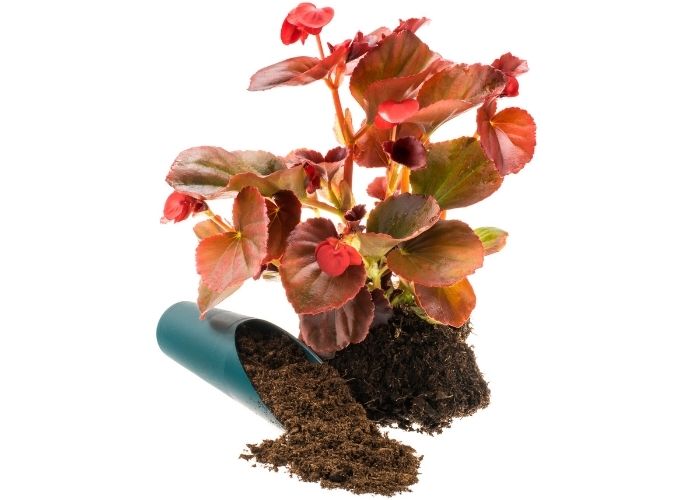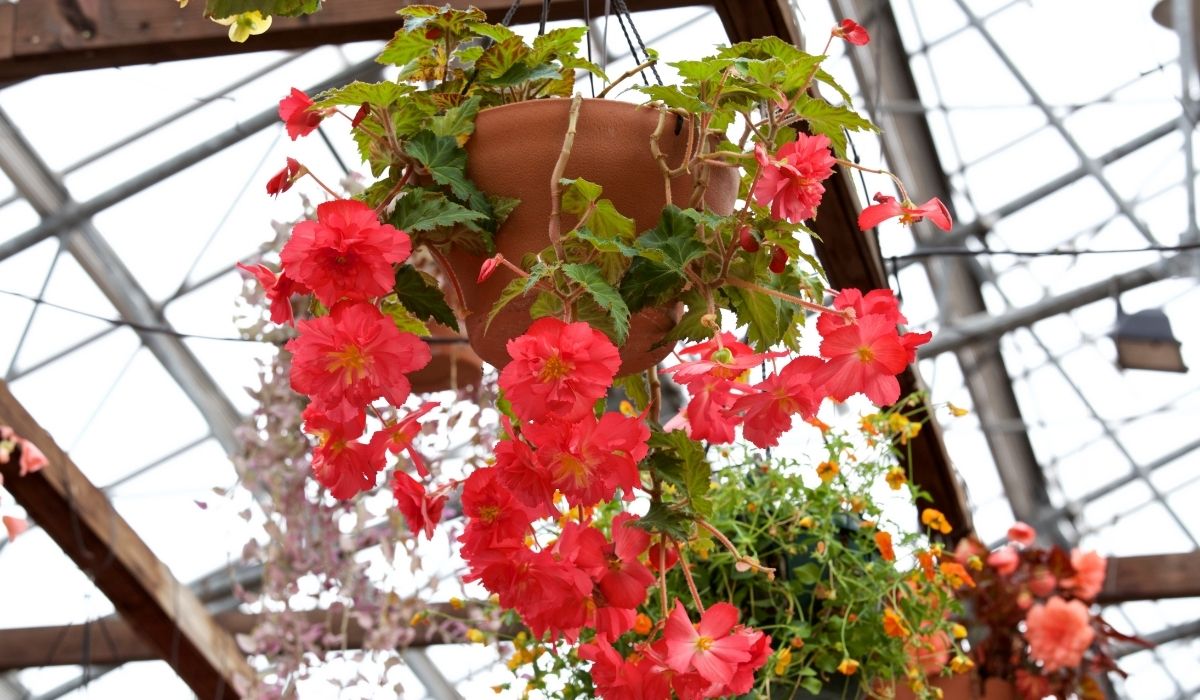The best soil for indoor begonias should have the right potting mix that will allow proper drainage and water flow to ensure your plants thrive.
Begonias are easy to grow, forgiving of neglect, and very tolerant of most conditions. They can be grown indoors or out in pots or hanging baskets, but they need a good balance of water and light to produce their full potential.
Most begonias will do well with indirect light and temperatures between 60° and 80°F. Begonias like plenty of water, especially during the hot summer months when they are actively growing. Water deeply at least once a week and give them a drink every few days. They also like fertile soil. A good quality potting mix, rich in organic matter and nutrients, is the most important part of caring for your indoor begonias.
The Best Soil For Indoor Begonias
Indoor begonias should have the right potting mix that will allow proper drainage and water flow to ensure your plants thrive. Here’s a list of good potting mixes for indoor begonias –
Pots of 4-8 inches in diameter should be filled with:
- 3 parts peat moss, 2 parts perlite, 1 part vermiculite or equal parts of all three,
- ½ cup vermiculite, ½ cup perlite, and 1/3 cup vermiculite,
- ¼ cup perlite, ¾ cup peat moss, and ¼ cup vermiculite or equal parts of all three.
- A good growing mix will drain well, allow plenty of room for roots, have good aeration, and should not be heavy. It should be noted that while peat moss is very good soil for indoor begonias, it is not the best.
This is because peat moss absorbs water like a sponge and can cause root rot and other problems in plants. Instead, choose a medium-textured potting mix that will allow proper drainage, aeration, and room for roots. There are many good potting mixes available, and you can experiment to see what works best for your plants. It is important to test different mixes for your plants. If you find that one particular mix is not working for you, try another. Be careful to note which mixes you’ve tried before when choosing a new mix.
Read more about Best Crops For Clay Soil

Characteristics Of A Good Potting Mix For Indoor Planting
Good drainage. The roots should not be waterlogged for several days and should drain easily when watered. Roots can swell when they are not properly drained. It is therefore recommended that you buy the mix with a drainage layer. If you use a mix with lots of peat, it is important that you add some perlite or vermiculite. These materials will help the mix drain more easily.
Good water retention capacity. The soil should retain water for several days without becoming wet or soggy. If you want to store a lot of pots, it is important that the mix can hold water.
A good mix should not smell too strongly. The mix should not be too rich in nutrients and should not smell like fertilizer.
The mix should contain a little sand, as it will wear away over time. Sand is necessary to hold the mix together, but it also makes it heavier. A potting mix with sand in it is very difficult to handle and is difficult to store. If you have sandy soil, you should try to use a mix without sand.
Good resistance against frost. This is an important property of a good potting mix. Good aeration. This means that the soil should not be compacted. It is not possible to aerate a mix containing lots of peat or compost because these materials are too bulky.
Good light permeability. The light should be able to penetrate the mix. If you plant a tree or shrub in a potting mix with very high levels of organic material, this will reduce the light permeability of the soil. The mix should be translucent.
Good mix capacity. The mix should be able to hold a large amount of water without becoming wet or soggy. The mix should be able to hold several kilograms of water.
Good soil density. The mix should be dense enough to hold water and to hold plants. The mix should be able to hold 10-20kg of plant material.
Good soil texture. The mix should have a good soil structure. This means that there should be lots of air spaces between the roots and the mix.
Organic composition. The mix should contain lots of organic material. This includes compost, peat, sand, bark, wood chips, etc.
The soil pH. The mix should have a neutral to slightly acidic pH. If your mix is too acidic, you may need to add some lime to raise the pH. If you use a mix with lots of peat, you will need to add some lime to lower the pH.
Learn more about The Best Potting Soil For Plumeria
Frequently Asked Questions
[rank_math_rich_snippet id=”s-ad2b16d4-419e-4b2e-aad7-55138a0fe876″]
Summary Of The Best Soil For Indoor Begonias
The soil is the basic component in any container. It provides a foundation for plants and ensures their stability and growth. The best soil for indoor begonias, which grows the most beautiful flowers, is the one that meets all the requirements above. The best soil for indoor begonias should be enriched with fertilizers to make the plants grow fast and strong.

